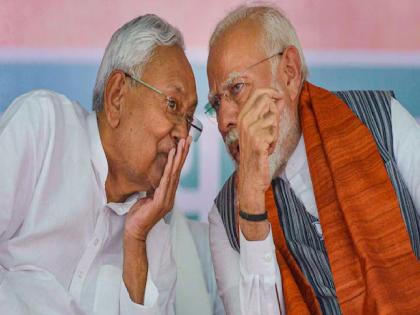India’s Vice President Jagdeep Dhankhar has unexpectedly resigned from his post, triggering a wave of speculation and political discussions. Dhankhar cited health reasons for stepping down. In a letter to President Droupadi Murmu, he stated,
“In adherence to medical advice and prioritizing my health, I am resigning from the post of Vice President of India with immediate effect under Article 67(a) of the Constitution.”
His resignation has led to widespread speculation about who will be the next Vice President. In the midst of this, BJP MLA from Bihar, Haribhushan Thakur, has proposed the name of Nitish Kumar. He is the current Chief Minister of Bihar.
The Political Significance Behind the Demand
Though Nitish Kumar has not responded to the proposal, many view the BJP MLA’s statement as a political move with deeper implications. BJP leaders suggest that appointing Nitish Kumar as Vice President would be a matter of prestige for Bihar.
This suggestion comes at a critical time—Bihar is set to hold assembly elections next year. The move is being interpreted as the BJP’s strategy to shift Nitish Kumar to Delhi, paving the way for them to gain political advantage in the state.
Similar Demand Was Made Earlier
This isn’t the first time such a proposal has been floated. A few months ago, former Union Minister Ashwini Kumar Choubey had suggested that Nitish Kumar be appointed as the Deputy Prime Minister of India. That proposal too led to various political interpretations. However, Nitish Kumar remained silent on the matter then, just as he has now.
Who Will Be the New Vice President? What Is the Selection Process?
Role of the Vice President:
-
The Vice President of India is also the ex-officio Chairperson of the Rajya Sabha (Upper House of Parliament).
-
If the President’s office becomes vacant, the Vice President steps in to fulfill the responsibilities.
Eligibility Criteria:
-
Must be a citizen of India.
-
Should be at least 35 years old.
-
Required to deposit ₹15,000 as nomination security.
How Is the Vice President Elected?
Voting Process:
-
Only Members of Parliament (MPs) from both Lok Sabha and Rajya Sabha are eligible to vote. This includes nominated members as well.
-
Voting is done using the preferential voting system.
-
Example: If there are three candidates A, B, and C, the voter will rank them 1, 2, and 3 in order of preference.
-
Total Voters:
-
543 MPs from Lok Sabha
-
245 MPs from Rajya Sabha (including 12 nominated)
-
Total = 788 MPs
How Are Votes Counted?
-
A candidate needs to secure a minimum quota of votes to win, calculated as:
(Total valid votes ÷ 2) + 1-
For example: If 720 MPs vote, the winning quota becomes (720 ÷ 2) + 1 = 361 votes.
-
-
First preference votes are counted initially.
-
If no candidate secures the required number, the one with the least votes is eliminated, and their votes are redistributed based on second preferences.
-
This process continues until one candidate crosses the required vote quota and is declared the winner.
Jagdeep Dhankhar’s sudden resignation has sparked not just a search for the next Vice President but also intense political speculation—especially with Nitish Kumar’s name in the spotlight. While his elevation to the Vice Presidency could shift the power dynamics in Bihar ahead of elections, the final outcome now rests on political decisions and the election process that follows.








